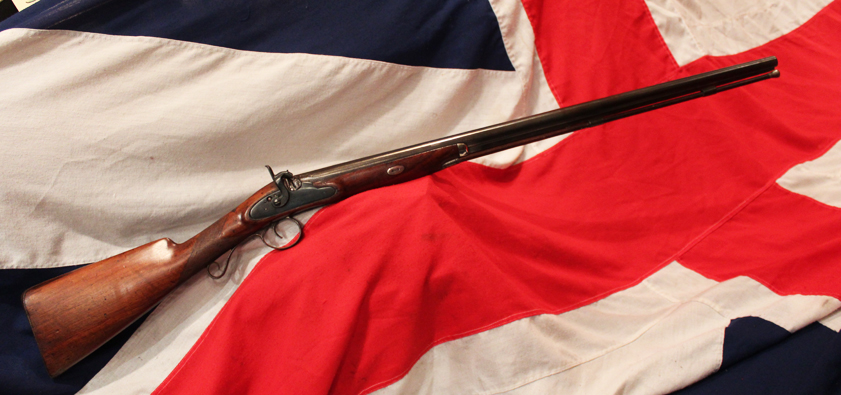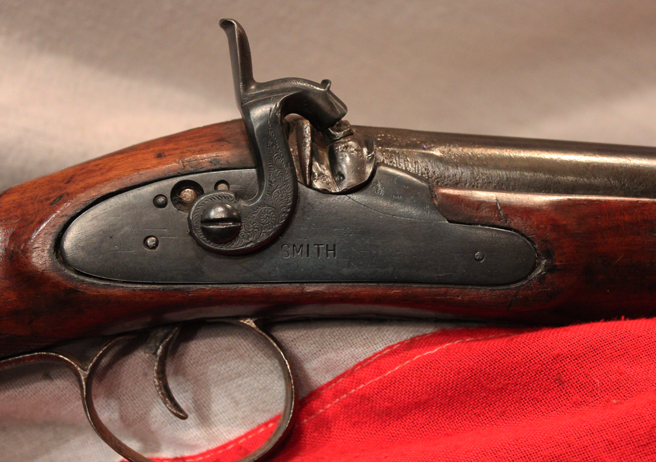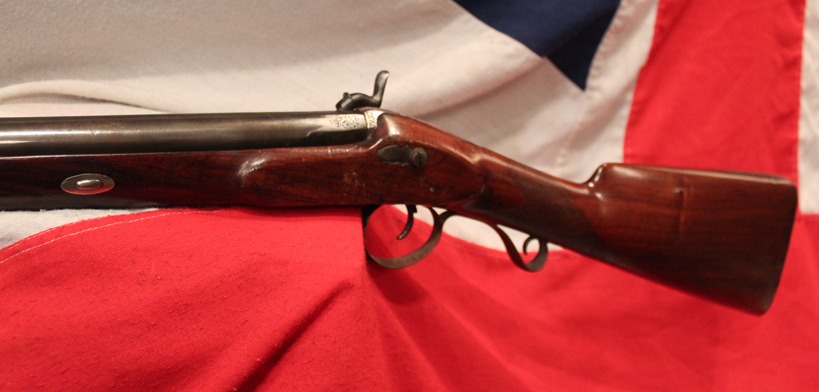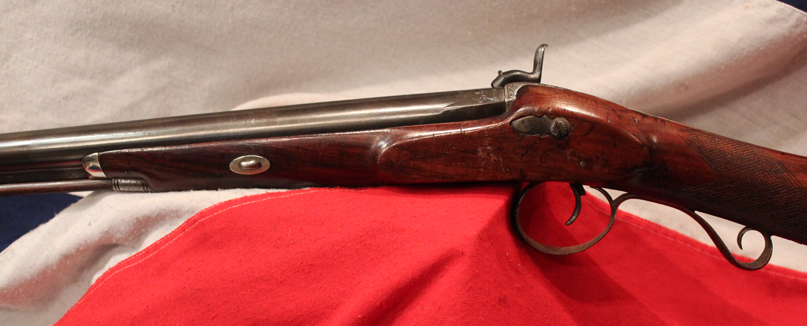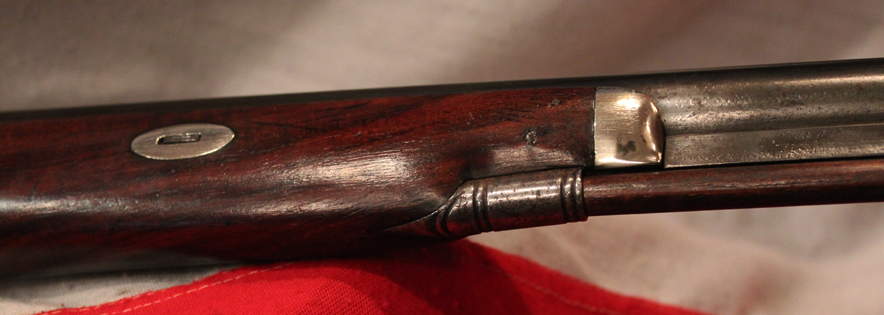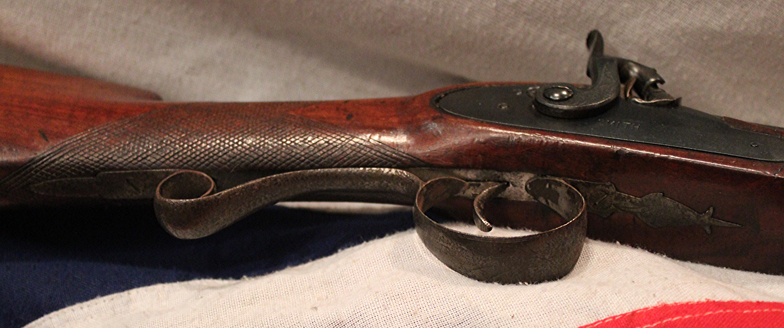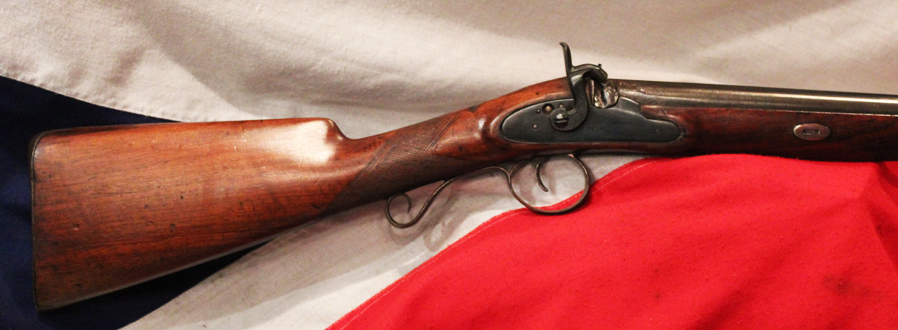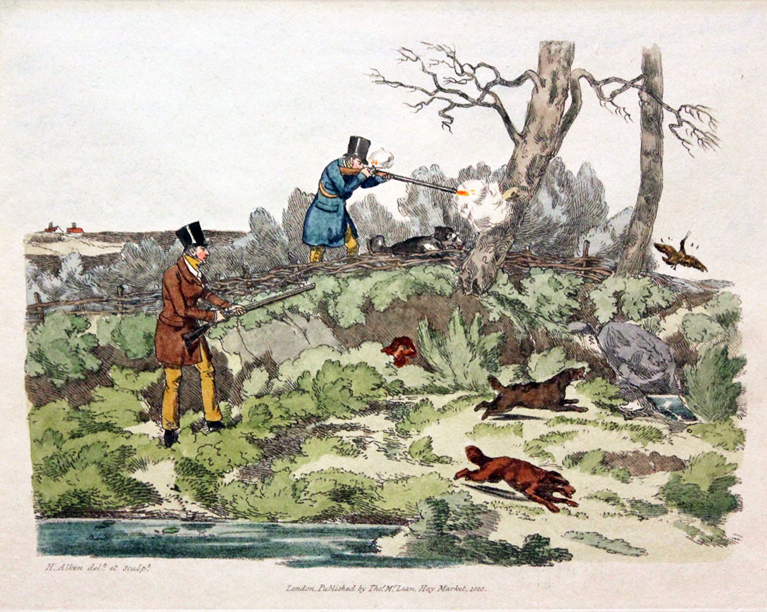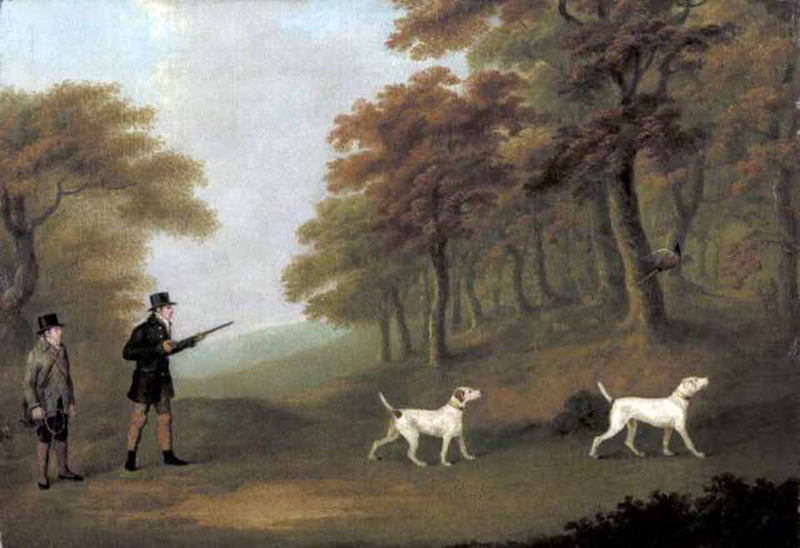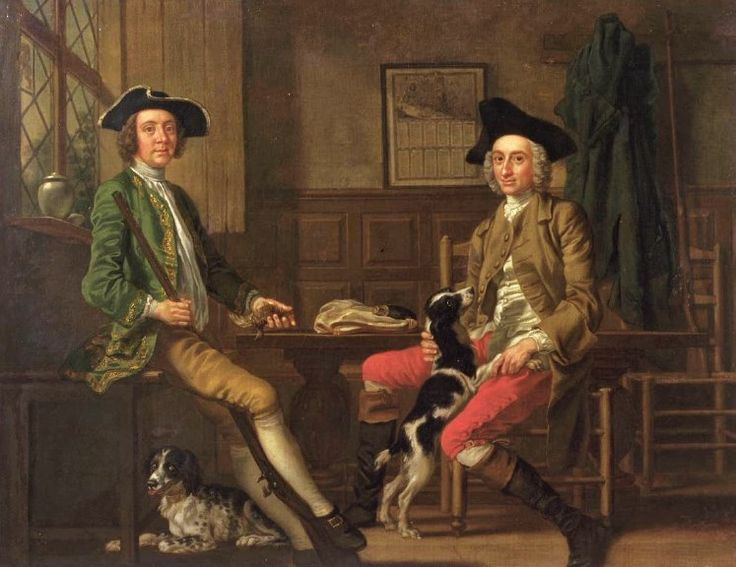A King George IIIrd Late 18th Century English Fowling Musket By Smith
For the exponent of gentlemanly pursuits. Fine walnut stock, percussion action converted from flintlock in the 1840's, steel furniture with pineapple form trigger guard finial and rear scroll. Hook breech quick release barrel with barrel key attachment. Good condition for age, fine working action. Small very old pitting area on barrel near breech, very slight scuff mark on stock at reverse of lock plate area. Throughout much of its history, hunting in England was an activity of the upper class. Legally, only land owners could hunt in England and the vast majority of the land was in large estates owned by the wealthy. To reduce poaching, the right of a person to own a gun was greatly restricted unless he was a landowner. Thus, ownership of a gun was not even a choice for the average British citizens. Moreover, deer hunting was further restricted to the royalty and generally carried out on horseback with dogs.
The wealthy British sportsmen of the Eighteenth and Nineteenth Centuries were primarily interested in hunting various types of birds. Most of their arms were designed for wing shooting. Rifles were considered an oddity. In the book titled British Field Sports; William Henry Scott (1818) the author described rifle shooting as a ?nice and curious branch of gunnery.? Scott goes on to state that "Rifles ? were little known among us, in the first American War, when people were amused on this side of the water by the story of an American woodsman, who had actually shot an eagle with his rifle, when it was?out of sight, a thing by no means impossible."
Colonel Peter Hawker, one of the most prolific British hunters of the early nineteenth century, maintained detailed diaries relating to his hunting activities. Over the course of many seasons, Hawker shot more than ten thousand birds and other small game. Over the same period of time, Hawker harvested only three deer. Colonel Hawker records that the first time he ever fired a rifle was in June of 1813 (at the age of 27) in anticipation of shooting a deer which had been causing crop damage. (Colonel Hawker's Diary at page 74). As with all our antique guns no license is required as they are all unrestricted antique collectables
Code: 20483
650.00 GBP

